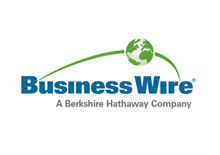Valve Controller Market by Type, Digital Valve Controller Communication Protocol, End-use Industry, and Geography - Global forecast to 2025 - ResearchAndMarkets.com
The "Valve Controller Market by Type (Traditional and Digital Valve Controller), Digital Valve Controller Communication Protocol, End-use Industry (Oil & Gas, Energy & Power, Water & Wastewater Treatment), and Geography - Global forecast to 2025" report has been added to ResearchAndMarkets.com's offering.
The global valve controller market size is estimated at USD 1.8 billion in 2020 and is projected to reach USD 2.2 billion by 2025.
The valve controller market size is expected to register a CAGR of 3.7% during the forecast period. The rising importance of monitoring and controlling in the process industries for improved efficiency, increasing demand for fuel and power, growing need for a connected network to maintain and monitor various equipment in plants, and surging focus on establishing new nuclear plants and upscaling of the existing ones are the key driving factors for the valve controller market.
The introduction of IoT & industry 4.0, the need for valve replacement, and the adoption of smart valves to offer improved customer service are among the other factors fueling the valve controller market. However, a rise in collaboration among industry players can hamper the growth of the valve controller market.
The digital valve controller market is projected to hold a larger share during the forecast period.
Digital valve controllers are the most widely used valve controllers due to their several applications across all industry verticals. The feedback-based controlling of the valve operation helps in better performance of the complete valve assembly. Digital valve controllers are more accurate and reliable as compared to traditional valve controllers. For example, in China, at one of the world's largest integrated chemical facilities, instrument engineers faced pipeline vibration that was destroying a steam service valve's instrumentation.
The chemical end-use industry is expected to hold the largest share of the valve controller market from 2020 to 2025.
Valves in the chemical industry are subject to handling media, such as abrasive silica, molten slurry, liquefied wax, high-velocity hard particles, corrosive attacks, and fugitive emissions. The efficient performance of valves in this industry not only ensures the process of integrity and staff safety but also enhances the volume and rate at which the plant can produce products, thereby enhancing profitability. In the typical chemical and petrochemical plants, valves are used in diversified plant operations that include feed pumps, compressors, furnaces, reactors, exchangers, separators, letdown systems, fluid management systems, condensers, and steam lines for pressure flow control, abrasion, corrosion, scaling and erosion, emission, cleaning, pressure-assisted sealing, and others.
Manufacturers operating in this industry, focus on enhancing the business processes by implementing valve controllers. In chemical plants, hazardous reactions may occur if chemicals come in contact with reactive materials. Therefore, control valves are used in plants to reduce emissions, increase plant safety, and protect the environment while valve controllers are used to supporting valves' inaccurate positioning and performance.
APAC is projected to hold the largest share of the valve controller market.
APAC is expected to hold the largest share of the valve controller market. Rapid population growth and urbanization in developing economies, such as China, Japan, and India, have led to the growth of energy & power, water & wastewater treatment, construction, chemical, pharmaceutical, and oil & gas industries in the region. This, in turn, increased the demand for control valve assemblies with valve controllers until 2019. However, COVID-19, a global health emergency and also an economic crisis, has hit the valve controller market in 2020 adversely.
The valve controller market is expected to witness a significant decline as few of the major industries adopting valves and valve controllers are oil & gas, energy & power, and water & wastewater treatment. These industries are non-operational due to several government implications that include lockdown, foreign trade, and a halt on the supply of non-essential goods & services as precautionary measures for the safety of people. There is also a huge supply-demand gap due to the decline in global demand.
Market Dynamics
Drivers
- Rising Importance of Monitoring & Controlling in the Process Industries for Improved Efficiency
- Increasing Demand for Fuel and Power
- Growing Need for Connected Networks to Maintain and Monitor Various Equipment in Plants
- Surging Focus on Establishing New Nuclear Power Plants and Upscaling of Existing Ones
Restraints
- Lack of Standardized Norms and Governing Policies
Opportunities
- Need for Valve Replacement and Adoption of Smart Valves
- Introduction of IoT and Industry 4.0
Challenges
- Rise in Collaboration Among Industry Players
Company Profiles
- Emerson
- Metso
- Circor International Inc.
- ABB
- Schneider Electric
- Flowserve Corporation
- Smc Corporation
- Azbil
- Baker Hughes
- Rotork
- Siemens
- IMI
- Cla-Val
- Dymax Corporation
- Tokyo Keiki
- Curtiss-Wright Corporation
- Samson Controls
- Vrg Controls
- Power-Genex
- Dwyer Instruments
- Akron Brass Company
- KSB
- KZ Valve
- Gefran S.P.A
- Enovation Controls
- Yeagle Technology Inc
- PR Electronics 153
- Val Controls A/S
- Elkhart Brass Manufacturing Company, Inc.
- Axiomatic Technologies Corporation
For more information about this report visit https://www.researchandmarkets.com/r/frvvhc
View source version on businesswire.com: https://www.businesswire.com/news/home/20200609005459/en/




